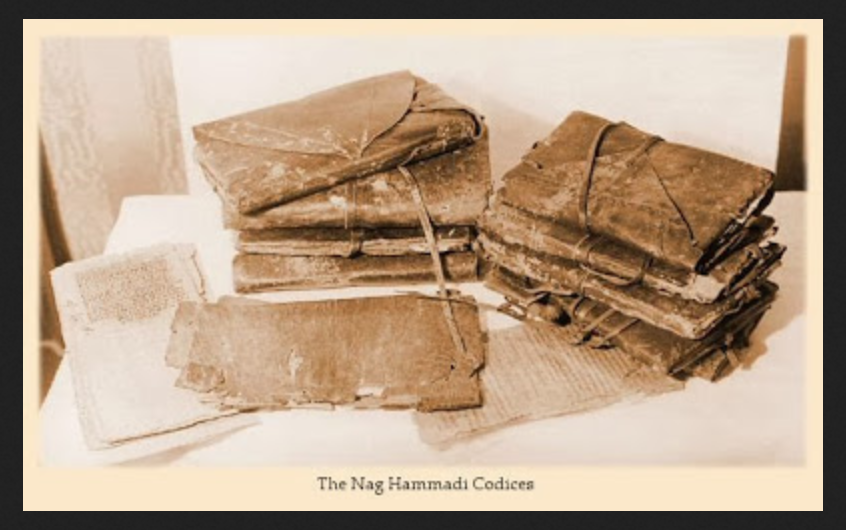Excerpts from JLL Writings:

The Nag Hammadi Codices – earliest surviving bound books
Nag Hammadi Library: Abbreviated NHL. Thirteen leather-bound packets, the earliest example of bound books, comprising fifty-two documents written in Coptic. Discovered in Upper Egypt in December, 1945. Widely assumed to be original writings that survive from various Gnostic sects existing in Egypt and the Near East between 150 and 350 C.E. Also called the Nag Hammadi Codices (NHC). Translated into English as The Nag Hammadi Library in English (NHLE). Scholars edition, the Coptic Gnostic Library (CGL).
Coptic: A stenographic language invented by Egyptian scribes around 100 C.E., using the Greek alphabet (capital letters only) plus six letters from the demotic or popular form of Egyptian writing. Surviving Gnostic materials are translations from presumed Greek originals into Coptic.

Nag Hammadi Cave where the codices were found
The Nag Hammadi Codices – The thirteen codices discovered in Upper Egypt in December, 1945, have come to be known as the Nag Hammadi Library (NHL), after a village on the west bank of the Nile River. Based on examination of the “cartonnage,” dated letters and accounts contained in the bindings of the codices, experts have determined that the scrolls must have been concealed in the cave between 345 and 348 CE.



Nag Hammadi, Egypt – Strangely, scholars do not refer to the Ptolemaic temple of Hathor at Dendera, located a mere stone’s throw from Nag Hammadi. From the roof of the temple you can look over the dramatic bend of the Nile and see right across to the cliffs of Jabal al-Tarif where the codices were hidden. The nearest town to the cave, Hamra Dun, is too small to merit notice, otherwise these long-lost texts would be called the Hamra Dun library. Hamra Dun is the Arabic place name for the older Coptic name Chenoboskian, “refuge of wild geese,” and behind that name is another, the Egyptian place name, Sheniset, “the acacias of Seth,” indicating an association with the Gnostic sect calling themselves Sethians.

Dendera Temple Complex

Ptolemaic temple of Hathor at Dendera
See the next article: “The Dendera Zodiac“